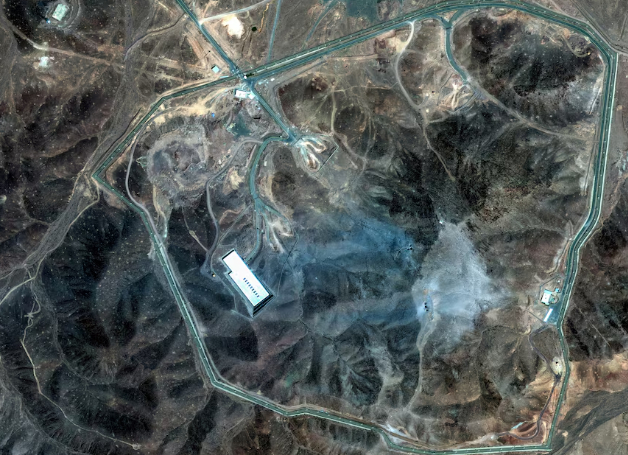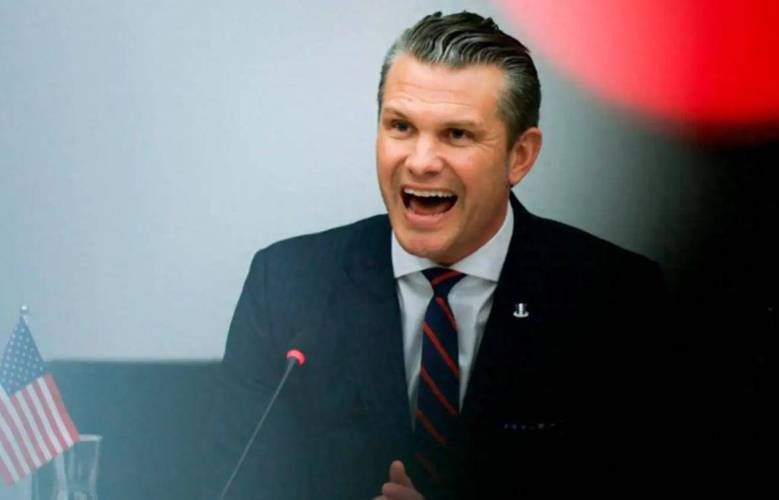
In June 2025, the United States launched air strikes on Iran's nuclear facilities such as Fordow, Natanz and Isfahan. This strike, codenamed "Operation Midnight Hammer", claimed to have destroyed Iran's nuclear capabilities. However, the most eye-catching mystery after the attack was not the extent of the damage to the facilities, but the whereabouts of 408 kilograms of highly enriched uranium (HEU) with an enrichment of 60% - this batch of uranium materials, enough to make several nuclear weapons, mysteriously "disappeared" after the smoke cleared, setting off an international "cat and mouse" pursuit.
The US Department of Defense insisted that Iran did not transfer uranium materials before the airstrike, and that bunker busters and cruise missiles had "completely destroyed" the nuclear facilities. But satellite images and multiple intelligence pointed to another possibility: a few days before the attack, an abnormal gathering of vehicles appeared near the Fordow nuclear facility, and Iranian officials also publicly admitted that "nuclear materials had been evacuated." Grossi, director general of the International Atomic Energy Agency, said bluntly that the weapons-grade uranium reserves "have been moved" and their volume can even fit into the trunks of 10 cars. European intelligence agencies assessed that uranium materials may have been dispersed to secret underground facilities, and the US military's strikes only temporarily delayed Iran's nuclear process. Iran has long been known for its "strategic ambiguity", and its nuclear material management is also full of mystery. History shows that Iran once transferred enriched uranium from Natanz to underground facilities in the deep mountains of Fordow. Did it repeat the same trick before this attack? Analysts pointed out that 60% enriched uranium is the core bargaining chip of Iran's nuclear program, which can be used for negotiations or to quickly promote weaponization. If it has been transferred, Iran may adopt a "distributed storage" strategy - hiding uranium materials in many places, such as the secret facilities under the Kuh-Korang Ghazi La Mountain, whose depth is even far beyond the 81-meter protective layer of Fordow. This strategy can both avoid air strikes and retain the spark for future nuclear research and development. The confrontation between the United States and Iran over the whereabouts of uranium is essentially a continuation of the intelligence war. The Trump administration claimed that the uranium was still buried in the ruins, but did not provide any evidence; the Israeli media speculated that Iran might transfer the materials through cyber attacks, but there was no direct evidence. At the same time, the international verification agencies were in trouble - since the attack, Iran has refused the International Atomic Energy Agency to enter some facilities for verification, which has exacerbated the fog of the truth. What is more alarming is that the contradictions between the US and Israel have emerged: Secretary of State Rubio insisted that the conversion facilities were destroyed, while the chairman of the House Intelligence Committee, Himes, questioned "What is the point of destroying three facilities without knowing where the uranium is?"
The "disappearance" of enriched uranium is not only related to Iran's nuclear capabilities, but also affects the security structure of the Middle East. If the uranium materials are not destroyed and are scattered and hidden, Iran may accelerate the process of weaponization, forcing Saudi Arabia, Turkey and other countries to restart their nuclear programs and trigger a regional nuclear arms race. In addition, if the uranium materials fall into the hands of extremist organizations, it will become a global security nightmare. The international community is worried that this "cat and mouse game" is pushing the Middle East to the brink of nuclear proliferation, and the United States and Iran's insistence on their own opinions has brought efforts to prevent the crisis to a deadlock.
At present, the exact whereabouts of uranium materials are still a mystery: they may be hidden deep underground in the mountains, scattered in secret warehouses, or even transferred to civilian facilities in disguise. The International Atomic Energy Agency called on Iran to open up nuclear inspections, but Iran refused on the grounds of "damaged sovereignty". In the future, this pursuit may evolve into a long-term intelligence tug-of-war - the United States needs to balance military strikes and diplomatic pressure, while Iran is playing a game between "retaining bargaining chips" and "avoiding risks". The missing enriched uranium, like a sword of Damocles hanging over the Middle East, may trigger a new crisis at any time.
In this game of "cat and mouse", the true fate of uranium materials not only tests the reconnaissance capabilities of various countries, but also reflects the fragility of the nuclear non-proliferation system in regional conflicts. When truth and lies are intertwined, strategic games and military confrontations go hand in hand, the missing uranium is becoming a new fulcrum for leveraging the geopolitics of the Middle East - its final destination may determine the regional and even global security pattern in the next decade.

U.S. Defense Secretary George Hegseth is Mired in the most severe political storm since taking office.
U.S. Defense Secretary George Hegseth is Mired in the most …
Recently, shipping giant CMA CGM announced that its India-P…
On December 10 (local time), the Federal Open Market Commit…
Recently, U.S. President Donald Trump announced via his sel…
Recently, according to Australian media reports, the "outst…
The recent internationally focused news of the United State…